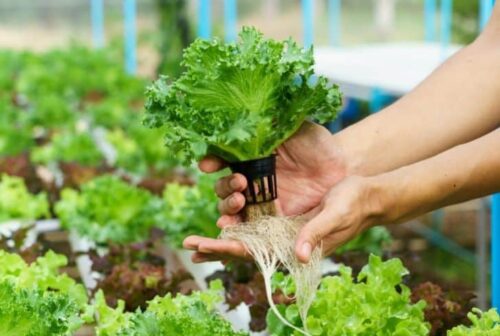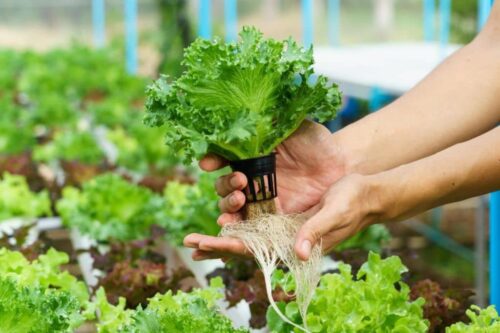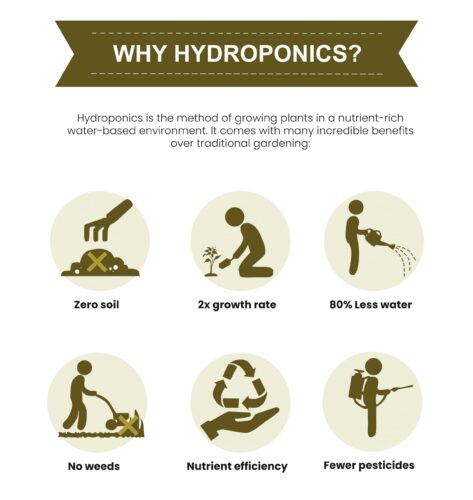The disadvantages of growing plants hydroponically include the reliance on expensive equipment and the need for precise nutrient management. Hydroponic systems require significant upfront investment and ongoing maintenance costs.
Additionally, maintaining the correct nutrient balance in the water can be challenging and time-consuming, requiring regular monitoring and adjustments.

Credit: www.conserve-energy-future.com
High Initial Investment
Equipment Cost
Hydroponic systems typically come with a substantial price tag. The specialized equipment needed includes pumps, grow lights, nutrient solutions, and pH control tools.
Setup Cost
Setting up a hydroponic system also requires an investment in infrastructure. Costs for constructing a growing area, installing reservoirs, and ensuring proper ventilation can add up quickly.

Credit: earth.org
Technical Knowledge Requirement
Growing plants hydroponically requires a strong technical knowledge base. However, disadvantages of this method include the need for precise nutrient balancing, potential system failures, and the reliance on technology for optimal growth. It’s important to carefully consider these drawbacks before venturing into hydroponic gardening.
Growing plants hydroponically may seem like a futuristic and efficient way to cultivate plants, but it does come with its fair share of disadvantages. One prominent drawback is the technical knowledge requirement that is necessary for successful hydroponic gardening. Let’s delve into a couple of key aspects that demand a solid understanding: nutrient management and pH balance.
Nutrient Management
Proper nutrient management is crucial when it comes to growing plants hydroponically. Unlike traditional soil-based gardening where plants obtain nutrients from the surrounding soil, hydroponics requires a more precise and meticulous approach. In a hydroponic system, nutrients are delivered directly to the plant’s roots through a nutrient solution.
Ensuring that the plants receive the right balance of essential nutrients can be a complex task. It requires knowledge of the specific nutrient requirements for each plant species and the ability to adjust nutrient levels accordingly. Providing plants with inadequate or excessive nutrients can lead to stunted growth, nutrient deficiencies, or even nutrient toxicity.
Ph Balance
Another technical aspect that needs careful attention in hydroponics is achieving and maintaining the proper pH balance. pH refers to the acidity or alkalinity of the nutrient solution in which the plants grow. Different plant species thrive under different pH conditions, and maintaining the ideal pH range is indispensable for their growth and development.
While the optimal range may vary depending on the crops being grown, most plants prefer a slightly acidic pH level, typically ranging from 5.5 to 6.5. Deviating significantly from this range can result in nutrient imbalances, causing deficiencies in certain minerals that are essential for plant growth.
Monitoring and adjusting the pH of the nutrient solution is an ongoing task in hydroponics. It requires regular testing using pH meters or paper strips and adjusting the pH levels using pH-up or pH-down solutions. Achieving and maintaining the correct pH balance is essential to ensure that plants can uptake nutrients efficiently and thrive in a hydroponic environment.
Despite these technical challenges, mastering nutrient management and pH balance is essential for successful hydroponic gardening. With the right knowledge and expertise, hydroponics can provide numerous advantages, including faster growth rates, higher yields, and efficient use of resources. Careful attention to nutrient management and pH balance will allow you to reap the rewards of cultivating plants hydroponically.
Risk Of System Failures
When cultivating plants hydroponically, the risk of system failures, such as nutrient imbalances or pump malfunctions, can hinder growth. These disadvantages may require constant monitoring and troubleshooting to maintain optimal plant health and yield.
Pump Malfunction
Growing plants hydroponically relies heavily on the proper functioning of pumps to deliver the nutrient-rich water to the plant roots. However, pump malfunctions can occur, presenting a major disadvantage of this cultivation method. Plant roots need a constant supply of nutrients and water to thrive, and any interruption in the pump’s operation can lead to dire consequences. When the pump fails, the plants do not receive the required nourishment, causing them to wither and possibly die. This not only results in a loss of plants but also wastes the time and effort put into cultivating them.Leakage Issues
Another potential risk when growing plants hydroponically is the occurrence of leakage issues within the system. Since hydroponic setups often involve various tubes, containers, and channels, there is a higher probability of experiencing leaks, which can disrupt the functionality of the entire system. The presence of leaks can lead to several problems. Firstly, it can result in water loss, unbalancing the nutrient levels and depriving the plants of the essential elements they need for growth. Secondly, excessive leakage can cause unwanted humidity or water accumulation in the surrounding area, leading to the growth of molds or attracting pests, which can further harm the plants. Though the use of seals and regular system maintenance can minimize the chances of leakage, this drawback still poses a threat to the success of hydroponic cultivation. In conclusion, the risk of system failures poses a significant disadvantage to growing plants hydroponically. Pump malfunctions and leakage issues can disrupt the proper functioning of the system, jeopardizing the plants’ health and ultimately leading to a decrease in crop yield. Awareness of these challenges and taking proactive measures to mitigate them is crucial for those considering hydroponics as their cultivation method.Vulnerability To Power Outages
Growing plants hydroponically can be advantageous, but it comes with its own set of challenges. One significant drawback is the system’s vulnerability to power outages, which can have detrimental effects on the plants.
Impact On Growth
- Without power, hydroponic systems cannot function, affecting plant growth.
- Plants rely on a consistent supply of nutrients and water which halts during outages.
- Disruption in the growth cycle can lead to stunted or damaged plants.
Temperature Regulation
- Power is essential for maintaining optimal temperature levels in hydroponic setups.
- Lack of power can cause temperature fluctuations, harming plant health.
- Extreme temperatures due to outages can stress plants and impede growth.
Overall, power outages pose a major risk to the successful growth of plants in hydroponic systems. It is crucial to have contingency plans in place to mitigate the impact of these disruptions on plant health.
Potential For Crop Diseases
Growing plants hydroponically offers many advantages, but it also comes with some disadvantages, including the potential for crop diseases. Hydroponic systems create a favorable environment for certain types of pathogens, which can lead to issues such as root rot and Pythium infections.
Root Rot
Root rot is a common issue in hydroponic systems, caused by the proliferation of harmful bacteria and fungi in the nutrient solution. The lack of soil in hydroponic setups means that the roots are constantly submerged in water, which can lead to oxygen deprivation and create an ideal environment for pathogens to thrive.
Pythium Infections
Pythium is a water-mold that can quickly spread in hydroponic systems, leading to infections that can devastate plant roots. The presence of Pythium can cause damping-off of seedlings, root discoloration, and overall poor plant health. Once established, Pythium infections can be challenging to eradicate in hydroponic environments.

Credit: www.trees.com
Frequently Asked Questions Of What Are The Disadvantages Of Growing Plants Hydroponically?
What Are The 5 Disadvantages Of Hydroponics?
There are five main disadvantages of hydroponics: 1) High upfront cost for setup; 2) Reliance on technology and electricity; 3) Susceptibility to power outages; 4) Risk of nutrient imbalances leading to crop damage; 5) Limited crop diversity due to specialized growing requirements.
What Is The Main Problem In Hydroponics?
The main problem in hydroponics is nutrient management.
What Are The Risks Of Hydroponics?
The risks of hydroponics include nutrient imbalances, disease outbreaks, equipment failure, and power outages, which can impact plant growth.
What Are Three Plants That Are Not Recommended For Hydroponics?
Three plants not recommended for hydroponics are oak trees, shrubs, and water lilies. These plants have extensive root systems and may not thrive in the controlled environment of a hydroponic system.
Conclusion
While hydroponic gardening offers many benefits, it also comes with its downsides. Issues like upfront costs, system maintenance, and the learning curve can be challenging. Despite these disadvantages, with proper care and knowledge, hydroponic growing can be a rewarding and sustainable way to cultivate plants.
